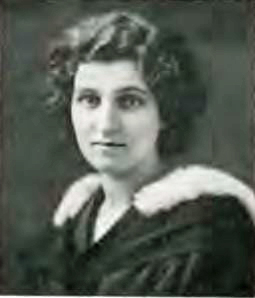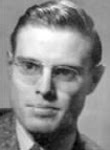Pour une histoire des femmes bibliothécaires au Québec: Portraits et parcours de vies professionnelles edited by Marcel Lajeunesse, Éric Leroux and Marie D. Martel. Québec: Presses de l’Université du Québec, 2020. xviii, 178 pp., illus.
This book is a welcome and unusual addition to library shelves dedicated to Canadian librarianship. For too long, the role of women in the development of Canada’s libraries was mostly overlooked. We now have a well documented history/biography of seven women who made significant contributions to the culture of Quebec and its librarianship. The three editors in charge of this collection are all associated with the École de bibliothéconomie et des sciences de l'information at the l'Université de Montréal. Marcel Lajeunesse is a librarian, professor, and Quebec historian who served as the director and professor at this school and has authored many articles and books on librarianship. A Wikipedia entry provides more information on his remarkable career. Professor Éric Leroux’s interests include the history of libraries and librarians as well as the history of printing and the book trade. Professor Marie D. Martel’s current research involves projects related to social media platforms such as Wikipedia. Together, they have gathered several authors to provide interesting and lengthy accounts of women who worked in different types of libraries before and after the ‘Quiet Revolution’ dramatically changed Quebec society and politics after 1960. It was after this time that women began to emerge in leadership positions and librarianship assumed more prominence in the social, intellectual and cultural life of Quebec. The different authors provide a chapter on each.
The role of women in the development of Canadian libraries has not been charted in detail, even though as early as 1921 Mabel B. Dunham, chief librarian at Kitchener Public Library, flagged librarianship as a profession for women in her presidential address to the Ontario Library Association. Only a few individual biographies have been published that outline their contributions and recognize their leadership. The attainment of democratic freedoms by women in Quebec was a lengthy process spanning the years of first and second-wave feminism. A few highlights suffice to show that gender equality often lagged behind other provinces. In Quebec, it was not until 1940 that women gained the right to vote and be eligible as candidates in provincial elections. During the Quiet Revolution, the Civil Code of Quebec was amended to eliminate a wife’s duty to obey her husband and to allow them to practise a profession different from their husband. Most importantly, in 1976, Quebec’s Charter of Human Rights and Freedoms was enacted which explicitly prohibited discrimination based on gender. Female librarians in other provincial jurisdictions also faced discriminatory challenges, but they were able to secure positions of leadership and advance their careers in greater numbers. The Introductory chapter summarizes the progress of women in Quebec librarianship and provides some interesting background for the individual studies that follow.
Éva Circé-Côté (1871–1949) leads the list of seven influential women who worked in Quebec libraries. Andrée Lévesque discusses her career as a journalist, writer, and librarian who became head librarian at Montreal’s first public library, the Bibliothèque technique de Montréal, in 1903, only to be demoted in 1909. Perhaps her short-lived marriage to Pierre-Salomon Côté, her outspoken progressive viewpoints on social issues and feminism, or male prejudice led to this decision. After 1910, she became curator of the prestigious Philéas Gagnon collection of Canadian antiquarian books acquired by the city of Montréal. She classified and catalogued this collection, and, when it was transferred to the new Bibliothèque de la Ville de Montréal, she continued to work until her retirement in 1932. During this time, she continued to contribute literary and journalistic pieces that won her admiration from critics and friends alike.
Marcel Lajeunesse documents the career of Mary Sollace Saxe (1865–1942), chief librarian at the Westmount Public Library for three decades, by concluding that she possessed many qualities: a strong and creative personality, significant leadership, recognized political acumen, and a clear vision for the public library (p. 40). Some of her innovations included the introduction of reference service, the implementation of an open shelf system for the public, better children’s services, and expanded library space. Mary Saxe also contributed articles and published Our Little Quebec Cousin, a children’s book describing life in Quebec.
Marie-Claire Daveluy (1880–1968) was an author, historian, librarian, and library educator. Johanne Biron charts her extraordinary library career after obtaining a library diploma from McGill University when she became an assistant librarian at the Bibliothèque de la Ville de Montréal from 1920–43 and advanced to chief of cataloguing from 1930–41. Most importantly, in 1937, with Aegidius Fauteux, she founded the École de bibliothécaires at the Université de Montréal and served as an assistant director and professor for many years. In 1943 she participated in the formation of the Association canadienne des bibliothèques d’institutions (now the Association pour l’avancement des sciences et techniques de la documentation, Asted). She was the first woman to be a member of the Historical Society of Montreal in 1917, and she was the author of popular children’s works exemplified by Les Aventures de Perrine et de Charlot published in 1923. She was at the forefront of cultural life and was accorded many honours during her lifetime.
Hélène Grenier (1900–92) is best known for her work in Montreal school libraries and promotion of good reading for children. Éric Leroux provides an excellent account of her career, commencing with her work in 1926 at the Montreal Municipal Library alongside two notable colleagues, Éva Circé-Côté and Marie-Claire Daveluy. In 1931, she was hired by the Montreal Catholic School Commission, which operated both French and English-language schools, to establish a Teachers’ Library. Then, from 1952–61, she was elevated to director of school libraries for the commission. In this capacity, she greatly expanded and improved elementary and secondary school libraries. During her tenure, 159 new libraries were established and 80% of Catholic schools had a library when she retired. A lifetime interest in music and cultural pursuits led to her nomination as an Officer of the prestigious Ordre national du Québec in 1988
Claude Bonnelly studies the career of Céline Robitaille-Cartier (1930–2017), who served as director of the Laval University Library from 1978–88. She was the first female director at Laval and worked to improve the standing of her staff and library services at the university. The author knew her personally and succeeded her as director upon her retirement. He credits her humanistic approach to management in a period when automation, networking, and the initial challenges of the information society loomed large.
Paule Rolland-Thomas (1929–2021) is the subject of a biography devoted to library education by Michèle Hudon. She joined the École de bibliothéconomie when it was established at the University of Montreal in 1961 and continued teaching, training librarians, and researching until her retirement in 1994. A notable achievement was her preparation of the French language first and second editions of the Anglo-American Cataloging Rules published in 1973 and 1980. Her expertise in cataloguing, classification, bibliographic work, and subject access to resources made a significant contribution to librarianship in Quebec.
The closing chapter deals with two women, Hélène Charbonneau (1929–2021), a specialist in children’s literature, and Louise Guillemette-Labory (b. 1953), who rose through the ranks to become the Associate Director of Libraries in the Culture Department of the city of Montreal. During her tenure, the network of public libraries in Montreal underwent various studies leading to the renovation, expansion, and construction of new libraries throughout the city. Hélène Charbonneau was head of children’s work for the city of Montreal from 1972–79 before services for adults and children were combined, a typical realignment across North American libraries. She continued to coordinate and advise until her retirement in 1992. Just this year, in 2025, the Bibliothèque Ahuntsic on the Island of Montreal, where she worked for two decades after receiving her library diploma in 1952, was renamed the Bibliothèque Hélène Charbonneau in her honour. Marie D. Martel writes about their successes, yet notes that female librarians often remain underrepresented in reference works, especially Wikipedia.
These portraits of female librarians remind us of the important contributions women have made, not just in librarianship, but in the history of social, intellectual, and cultural life in Quebec. As well, all the women were determined to overcome the issue of gender-based discrimination. While they belong to different generations, the ‘glass ceiling’ existed in various manifestations that hindered their advancement for many years. The case of Claire Godbout, who was ‘bibliothécaire en chef’ at Trois-Rivières, recalls the earlier fate of Éva Circé-Côté. Her position was abolished in 1956 so that a man with the title ‘conservateur de bibliothèque’ could be hired in her place. Godbout was demoted to head of cataloguing at a lesser salary and informed of the decision without any forewarning. Despite the combination of male chauvinism with social restrictions, female librarians in Quebec persevered in their pursuit of executive careers, cultural pursuits, and social justice. They succeeded because they were ambitious, strong-willed, and determined to be recognized in the library profession as it developed in Quebec, especially after the Second World War.
It is perhaps fitting in this review to recount that other women, born in Quebec, made contributions that transcended local, regional concerns. A few librarians who briefly appear in this volume, such as Alvine Bélisle and Laurette Toupin, are also deserving of similar detailed biographies. I could add other Quebec natives, such as: (1) Juliette Chabot (1902–87), who earned her BLS at McGill University and subsequently authored valuable works on librarianship; (2) Beatrice Simon (1899–94), for many years Assistant Librarian at McGill and very active in special library work (especially medical science); (3) Margaret Ridley Charlton (1858–1931), a pioneering medical librarian working in Montreal and Toronto who helped found the Medical Library Association in 1898 in the United States; and (4) Mariam H. Tees (b. 1923- ), who was one of the first presidents of the Corporation des bibliothécaires professionnels du Québec and who was inducted into the Special Libraries Hall of Fame in 1988 after a lengthy career at the Royal Bank headquarters in Montreal.
As an added highlight to the informative historical research each author provides, two notable features of this book are the portraits and bibliographies that appear with each chapter, thus providing images and entries that future researchers will find of considerable value.
Further information:
My blog on Marie-Claire Daveluy is at this link.
My blog on Mary Saxe is at this link.
My blog on Mabel Dunham’s 1921 address to OLA delegates in Toronto about the role of women is at this link.
There are useful Wikipedia articles for Alvine Bélisle, Juliette Chabot, and Margaret Ridley Charleton.







